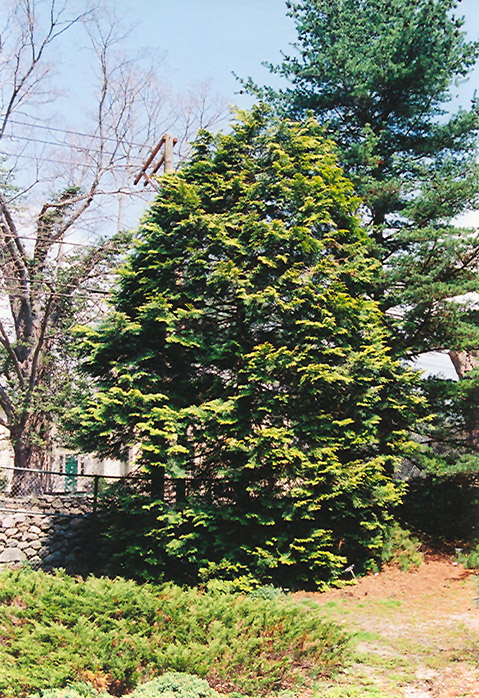Plant Finder
Young's Falsecypress*
Chamaecyparis obtusa 'Youngii'
* This is a "special order" plant - contact store for details
Height: 10 feet
Spread: 7 feet
Sunlight:
![]()
![]()
Hardiness Zone: 5a
Description:
A medium sized shrub which features horizontal sprays of soft yellow foliage which turns an interesting golden-bronze in winter; compact conical to oval habit of growth, use as a colorful accent or background in the garden
Ornamental Features
Young's Falsecypress is a dwarf conifer which is primarily valued in the landscape or garden for its decidedly oval form. It has attractive yellow evergreen foliage which emerges gold in spring. The scale-like sprays of foliage are highly ornamental and turn gold in the fall, which persists throughout the winter.
Landscape Attributes
Young's Falsecypress is a multi-stemmed evergreen shrub with a shapely oval form. Its average texture blends into the landscape, but can be balanced by one or two finer or coarser trees or shrubs for an effective composition.
This is a relatively low maintenance shrub. When pruning is necessary, it is recommended to only trim back the new growth of the current season, other than to remove any dieback. It has no significant negative characteristics.
Young's Falsecypress is recommended for the following landscape applications;
- Accent
- Vertical Accent
- Mass Planting
- Hedges/Screening
- General Garden Use
Planting & Growing
Young's Falsecypress will grow to be about 10 feet tall at maturity, with a spread of 7 feet. It has a low canopy with a typical clearance of 1 foot from the ground, and is suitable for planting under power lines. It grows at a slow rate, and under ideal conditions can be expected to live for 50 years or more.
This shrub does best in full sun to partial shade. It prefers to grow in average to moist conditions, and shouldn't be allowed to dry out. It is not particular as to soil type or pH. It is highly tolerant of urban pollution and will even thrive in inner city environments, and will benefit from being planted in a relatively sheltered location. Consider applying a thick mulch around the root zone in winter to protect it in exposed locations or colder microclimates. This is a selected variety of a species not originally from North America.
* This is a "special order" plant - contact store for details
